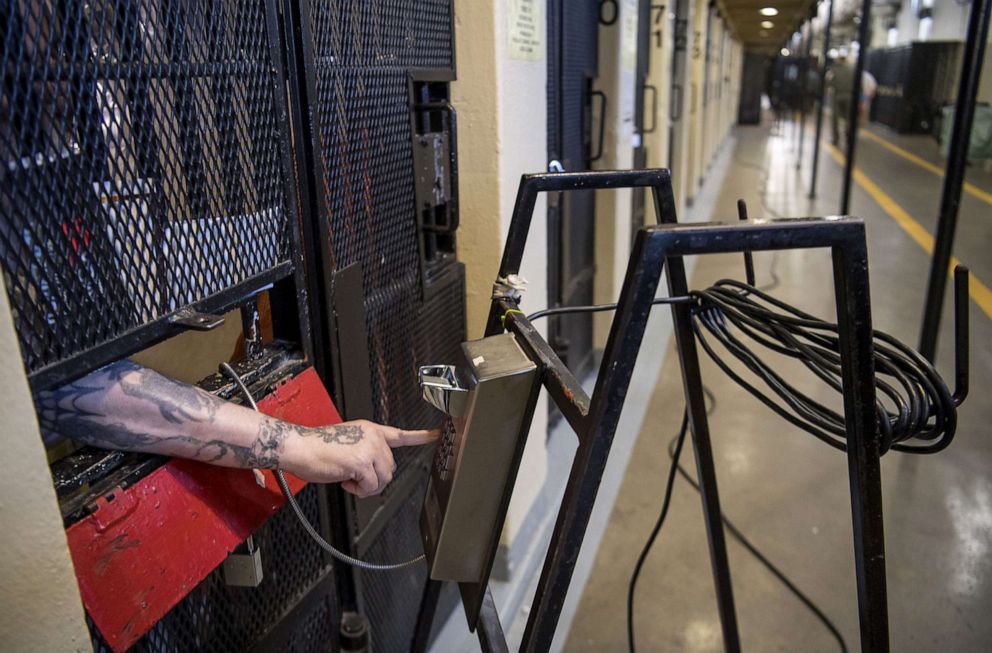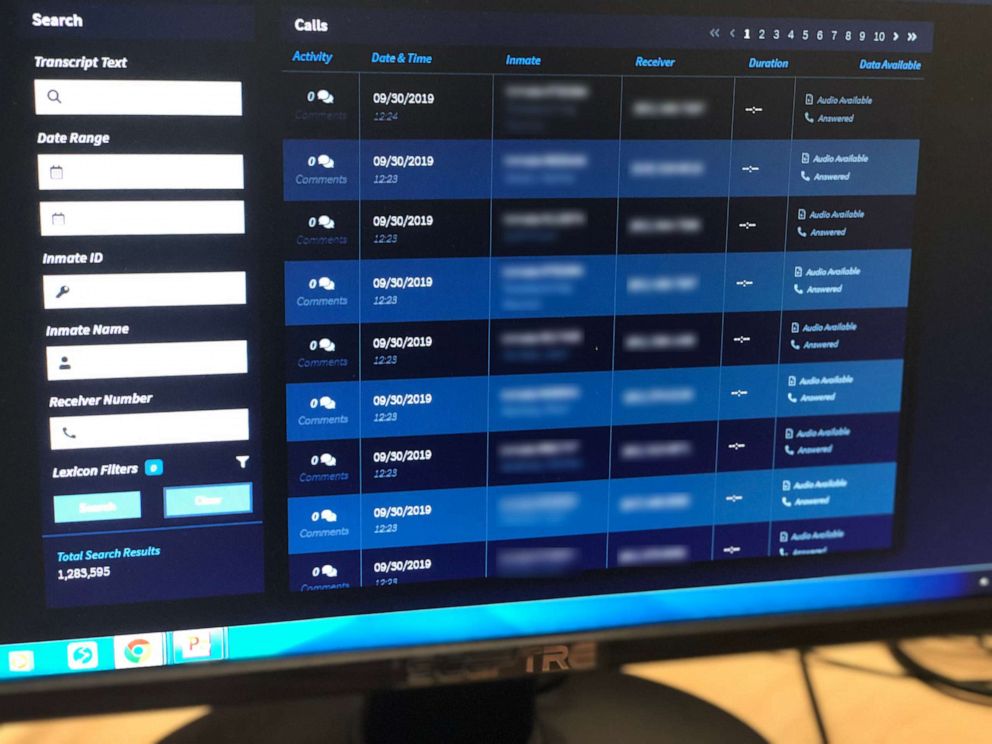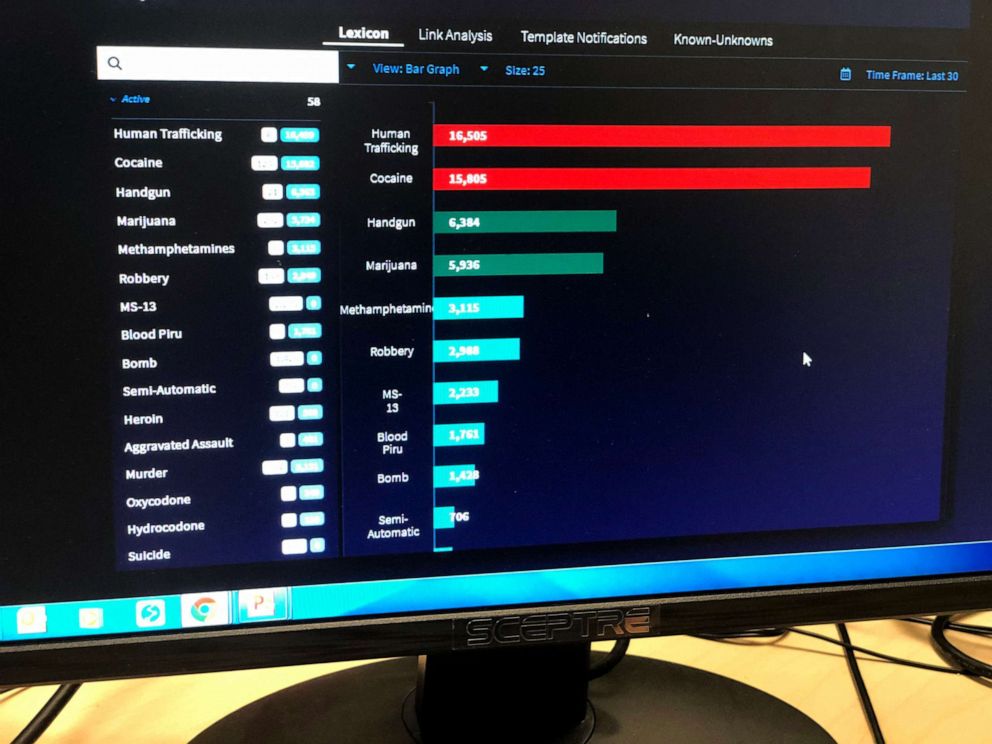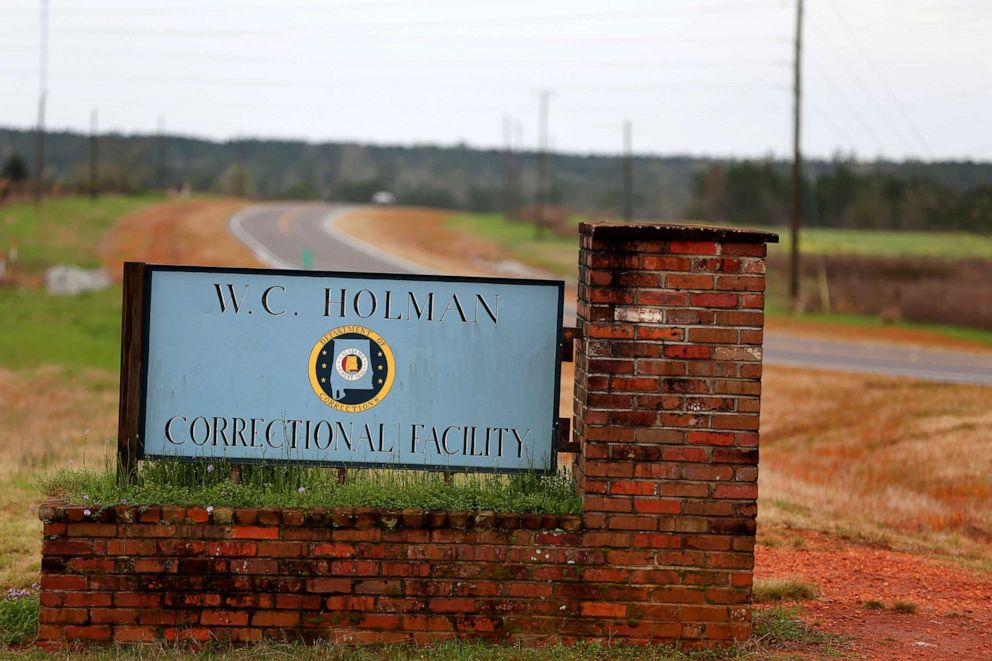US prisons and jails using AI to mass-monitor millions of inmate calls
'Would Whitey still be alive today if we had that intelligence?' a warden asked.
New technology driven by artificial intelligence (AI) is helping prison wardens and sheriffs around the country crack unsolved crimes and thwart everything from violence and drug smuggling to attempted suicides -- in near real time, in some cases -- through digitally mass-monitoring millions of phone calls inside the nation’s sprawling prison and jail systems.
Despite legally-mandated warnings preceding every prison phone call that the conversation is being recorded and monitored, inmates still regularly reveal astonishing amounts of incriminating information, according to technology company records provided to ABC News and interviews with law enforcement and corrections officials using the systems in multiple states.
In a jail phone call recorded earlier this month in Suffolk County, New York, an inmate allegedly threatened to kill the judge – identified by name in the call -- and the prosecutor in his case, as well as the inmate’s own family.
“If I got to stay longer than November … I’m killing them all when I get out … and I mean it!” the inmate said on the call, according to a partial transcript provided to ABC News by officials with LEO Technologies, a Los Angeles-based technology firm which began marketing the AI services to U.S. prisons and jails company in 2017. Suffolk officials said the investigation is ongoing.
In another recently-identified conversation, an inmate was recorded on a video call with a 16-year old girl who had been suspended from school, according to officials with the technology company. The student said she was going to return to the school to “even the score.”
When the video call was flagged and reviewed, investigators determined that while making the threat “she was holding a Glock [9 mm pistol] in her hand,” said LEO Technologies CEO Scott Kernan, a former secretary of the California Department of Corrections and Rehabilitation. Kernan declined to identify the region where the incident took place, citing an ongoing investigation.
In Alabama, corrections officials said they caught an inmate teaching his wife how to smuggle Suboxone, which aids in opiate withdrawal, into the jail -- by dissolving the drug in water and then using a makeup brush to paint the drug onto the back of postcards that would be mailed to the jail. Another recently-uncovered alleged plot involved smuggling narcotics into a facility by secreting them inside the soles of orthopedic shoes being delivered to an inmate who had been authorized to wear them by a county doctor, according to LEO internal reports.

Data-mining prison phone calls
The AI systems employed in these cases use speech-recognition technology, semantic analytics and machine learning software to build growing databases of searchable words – part of a global revolution in neural networks that can understand speech and build databases that just a few years ago were prohibitively difficult to search with AI in real time.
LEO Technologies’ system is powered by Amazon transcription technology, part of a suite of technology services the retail giant has been marketing to U.S. law enforcement in recent years -- including facial recognition software. Some critics -- including some of Amazon's own employees -- say Amazon is essentially expanding the government’s surveillance capabilities for its own profit.
In February, Amazon acknowledged the criticism of its facial recognition software in a statement which offered "proposed guidelines for the proper use of the technology."
"In the two-plus years we’ve been offering Amazon Rekognition, we have not received a single report of misuse by law enforcement," the statement noted. .
The $1.2 billion prison phone call industry has also come under fire in recent years for charging exorbitant rates for calls, according to annual studies by the Prison Policy Initiative, a non-profit think tank – as well as for tracking the locations of individuals called by imprisoned inmates, before the U.S. Supreme Court ruled that practice illegal. One of the nation’s largest prison phone company has also spurred controversy by recording privileged attorney-client phone calls, sparking litigation that remains ongoing.
But the underlying suite of AI-driven technologies being marketed to U.S. prisons and jails, which rapidly mine existing inmate recorded call databases, is beginning to change the way prisons monitor their inmate populations. The "smart prisons" industry is still evolving. The nation's two largest phone service providers to prisons and jails -- GTL and Securus, its main rival, are building out their own call analytics technologies. Securus is developing biometric voice identification technology and GTL is marketing iPad-like tablets for inmates. LEO -- which contracts with GTL -- is currently operating in five U.S. states, company officials said.
LEO Technologies embeds its own investigators into the corrections and law enforcement agencies it contracts with, and those investigators seed the databases with keywords, phrases and prison slang specific to the region of the country. They then notify law enforcement partners when the system picks up suspicious language or phrasings, a rapid-response process that company officials claim has prevented dozens of attempted suicides over the past two years in several states -- after officials were able to get an inmate psychological counseling in the minutes and hours after the inmate was recorded making references to self-harm. The same process is followed when recorded conversations point to imminent threats of violence within the facility, or to plots to smuggle in contraband.
The system's cost can vary, LEO Technologies officials said, but generally cost between $500,000 and $600,000 a year for a corrections facility housing about 1,000 inmates.
Unmonitored inmate communication ranked third in the list of most pressing priorities in a National Institute of Justice study of the nation’s nearly 7,000 correctional institutions published this year by the RAND Corporation, coming in behind only controlling prison contraband markets (No. 1) and inmate attacks on infrastructure security systems (No. 2).
Prisons and jails “are looking at this very seriously, and several are using it -- trying to figure out the right balance and mix of human and technology,” said Jonathan Thompson, executive director of the National Sheriff’s Association.
"Voice recognition has been around for 12 or 13 years," he said. "The question is: what do you do with the data?"
The technology has the potential to solve a decades-old challenge inside the nation’s corrections facilities.
“One of the biggest operational issues that has plagued this industry of automated inmate telephone recording has been the lack of staffing to monitor every single call,” said John Shaffer, a corrections technology expert and one of the authors of the NIJ study who spent 31 years working in Pennsylvania state and county prisons. “And, frankly, most inmate calls are innocuous.”
Retired warden Robert Hood, who from 2002 to 2005 ran Colorado’s ADX Florence “Supermax” federal facility, agreed.
“In the three prisons where I was warden, it was pretty much reactive: a very small percentage [of inmate calls] was monitored and it was done after the fact, when there was a crime or an alleged crime, that you’d get on to your phone monitoring equipment and try and hunt down what occurred,” he said.
Shaffer said that U.S. prison wardens have tried a variety of ways to balance the regular, proactive monitoring of inmate calls with limited staff resources.
“There [have] been different approaches over the years,” he said. “I remember Walla Walla penitentiary out in the state of Washington used to have officers sitting there in the towers at night listening to inmate calls for hours and hours and hours -- and that was their solution. And it never really worked as an operational solution.”

Briefed on the technology, Hood said he recognized its potential value for intelligence, as long as it was used in conjunction with, and did not supplant, traditional corrections practices like working with confidential informants, daily engagement with inmates, inspections, and drug-sniffing dog patrols.
“Here’s where my mind goes,” Hood said. “Would Whitey still be alive today if we had that intelligence?” he wondered, referring to the vicious murder of the Boston organized crime boss and FBI informant James "Whitey" Bulger last fall, the day after he was transferred to the Hazelton federal penitentiary in West Virginia. Bulger was beaten with sock-wrapped padlocks and his eyes were nearly gouged out with a shiv, or makeshift knife.
“Would there be some talk back and forth about hitting Whitey when he went to West Virginia to the federal prison?" Hood wondered. "And would [pedophile financier Jeffrey] Epstein -- who committed suicide, allegedly -- would there have been any value in the artificial intelligence in those types of scenarios? I want to believe yes, there would be value. The system that we had didn’t work.”
Cracking codes
Inside prisons and jails, criminal conduct is conveyed in code, where words can have very different meanings in different places, and can change from month to month or year to year. An AK-47, commonly known in Alabama prison culture as a “stick,” is called a “tube” elsewhere, or a “mower,” or a “chopper,” according to corrections officials in two states.
"Synthetic marijuana -- which is sometimes called 'spice' -- they’ve taken to calling it “no show” because if you smoke synthetic marijuana, it's not going to show up on the drug test," said David Thompson, a recently-retired commander in the Jefferson County Sheriff’s Office, who is not related to Jonathan Thompson.
Methamphetamine is known in the South as “mylar” or “ice,” while it’s commonly referred to in Los Angeles as “glass,” or “window,” officials said.
A “binky” is a homemade syringe for injecting drugs, often made out of an eyedropper, a pen shaft, and a guitar string, according to "Prison Diaries," a popular blog about prison life authored by a former inmate, which originally appeared in the New Haven Independent newspaper.
A year from now, all that slang could be obsolete – so investigators are constantly feeding new intelligence about prison slang into databases tailored to their unique jurisdiction or regional area.
“We’ve taught the system how to speak inmate,” said James Sexton, another executive at LEO Technologies.
At other times, the intentions an inmate conveys in a prison phone call are crystal clear.
After a Birmingham, Alabama man was arrested in 2017 on outstanding felony warrants and his car was towed to a local impound yard, law enforcement officials said they were tipped by LEO’s technology to search his car for drugs.
“He calls family members and asks them to go to the tow yard, and get a locked camera case from his car,” said David Thompson. “And he gives them the three-digit code to unlock the case.”
Law enforcement officers alerted to the phone call got a search warrant and rushed to the impound yard with drug-sniffing dog.
“We sent our narcotics people to the tow yard and beat the family there,” Thompson said. “We didn’t even have to break the case open because we had the code.”
Inside the camera case, authorities found three grams of cocaine, two grams of heroin and an undetermined amount of the sedative alprazolam, Thompson said.

In another recent incident in Jefferson County, authorities said they caught an inmate running a prostitution ring from inside the prison.
“He was complaining [on a prison phone] to the handler that a human trafficking victim was too far away for him to control her,” David Thompson said. “He was complaining that she was in California. He wanted her brought back closer to [Alabama],” Thompson said. “When we showed up at the hotel in Birmingham where the inmate had sent the trafficking victim, we were able to intercept them at the hotel and charge the handler.”
“He was running this prostitution ring and he had never left the building,” Thompson said.
Thwarting suicides and sharing intelligence
The new technology is also thwarting planned or attempted suicides, corrections officials in three states said.
"You always have reservations when you’re talking about new technology,” said Oxford, Alabama police chief Bill Partridge. “But it made a believer out of me in the first week. We’ve solved homicides, arsons, stopped jail contraband, solved some cold cases. But to me, though, the suicide prevention is the most valuable tool.”
“It’s just tragic all around when someone wants to take their life," Partridge said. "But taking your life in a penal institution -- that’s a huge news story, because we’re there to maintain their health and well-being. It [the AI technology] saves taxpayers copious amounts of money and it also helps the family because they don’t have to deal with that situation.”
It’s a constant game of cat and mouse – as we figure out an intervention, inmates figure out a circumvention.
Traditionally, U.S. law enforcement and intelligence agencies have resisted sharing information in order to protect their investigations. From small town detectives all the way up to the rivalry exposed after the 9/11 attacks between the Federal Bureau of Investigation (FBI) and the Central Intelligence Agency (CIA), investigators are notorious for aggressively protecting information they develop.
But the new A.I. technologies may be starting to change all that.
“When there’s a crime on the outside that occurs, we’re pretty much the first ones they call,” said Suffolk County Undersheriff Kevin Catalina, a former gang investigator in the New York City Police Department (NYPD) Intelligence Division.
For instance, after a series of shootings in Bellport, corrections officials were able to quickly produce intelligence that the shootings were connected.
“When we were able to pass that information along to our partners on the outside, they were amazed -- first of all that this existed within the jail and [secondly] that we were able to extract it and get it back out so fast,” Catalina said. “As a result of that, that kind of reverberated throughout the Suffolk County Police Department, and now we’re getting more and more inquiries from detectives regarding crimes on the outside.”
"The turnaround is so quick, it’s like a different level of respect," said Suffolk County Sheriff's Office Sergeant Joseph Nasta.

Marrying old school tactics to new technology
Still, veteran corrections officials are skeptical than even sophisticated technologies like AI will permanently change the culture inside prisons and jails.
“You hope that the technology doesn’t make the people lazy, make them less effective at walking the ranges, talking to the inmates, getting that feeling, you know?” Hood told ABC News. “It’s hard to explain. When you walk into a prison in the morning, most senior wardens know if there’s something going to jump off, whether there’s something going on, just because of the expressions on some of the inmates’ faces, the confidential informants, you could just feel it in the air."
Shaffer said that over the years he has developed what he described as a profound respect for the imaginative ways in which prisoners subvert rules inside correctional facilities.
“It’s a constant game of cat and mouse – as we figure out an intervention, inmates figure out a circumvention. Certainly it’s getting better. It’s better than it ever has been.”

One ongoing technological concern is contraband cell phones.
“One of the things driving the market in [contraband] cell phones is to get away from being monitored and recorded,” Shaffer said. “And the cost of a contraband cell has escalated in prison – and it used to be astronomical."
The U.S. Department of Justice has been testing out technology for years that would detect the use of contraband cell phones insides corrections facilities, but has yet to find a cost-effective method that doesn't lead to unintended consequences, like jamming the cell phones of civilians in and around urban facilities.
Prisoners' rights activists point out that the AI technology to mass-monitor phone calls is being used in not just prisons but jails, where many of the inmates have been charged but not convicted of a crime, and may not be able to afford bail.
"I can already envision what’s about to happen," said Bianca Tylek, executive director of Worth Rises, an inmate advocacy group that's critical of the commercialization of the corrections industry. "LEO creates a partnership [with the telephone providers], and passes on a cost to the inmate. They will be using surveillance to help with prosecutions, investigations and law enforcement. But the majority of people in jail are pretrial, and are subjected to additional levels of surveillance because they can’t afford bail -- and that really seems unfair and subjective. Rich people can get bail and not be subject to this added level of surveillance."
Hood, the former supermax warden, said he remains wary of the relentless march of surveillance technology.
"That’s great stuff," he said in a phone interview. "But I do fear a little bit about how much intelligence will [eventually] get outside the prison -- where you’re starting to look at conversations like the one we’re having right now."
ABC News' Josh Margolin contributed to this report.




